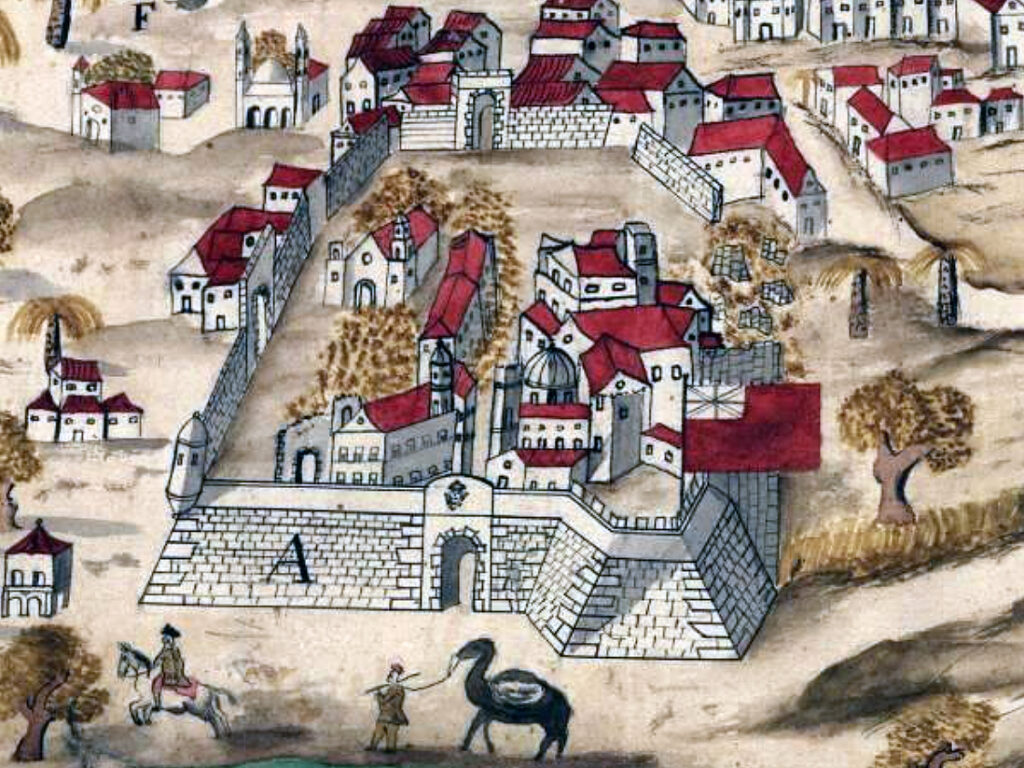(Mayilāppūr, Thirumayilai, Santhome, Mylapore, Madras)

Plano e Perspetiva da Cidade de S. Thomé de Meliapor…, ca. 1768, detail (in Sistema Marcial Asiático de D. António José de Noronha, map between pp. 233-234, Reservados, Gav-3, n° 22, Biblioteca Pública e Arquivo Distrital de Évora, Évora).
Mylapore (Chennai): the Peacock’s Sacral Landscape
Attracted by the myth of St Thomas, the Portuguese began to visit the area of Meliapor, on the east coast of the Indian subcontinent, during the second decade of the 16th century, founding a settlement on the coast surrounded by walls and bastions. However, the sovereignty of this settlement and its surroundings – where the two “hills” associated with the apostle’s transformation into a peacock, martyrdom and tomb were located – was always negotiated with the Indian powers that controlled the region. Franciscans, Dominicans, Jesuits and Augustinians established various religious structures and rural properties in the urban settlement and surrounding areas. These early modern churches and landscapes remain largely unresearched, and understanding their history and heritage significance involves mapping and reconstructing a completely transformed area of Chennai.
